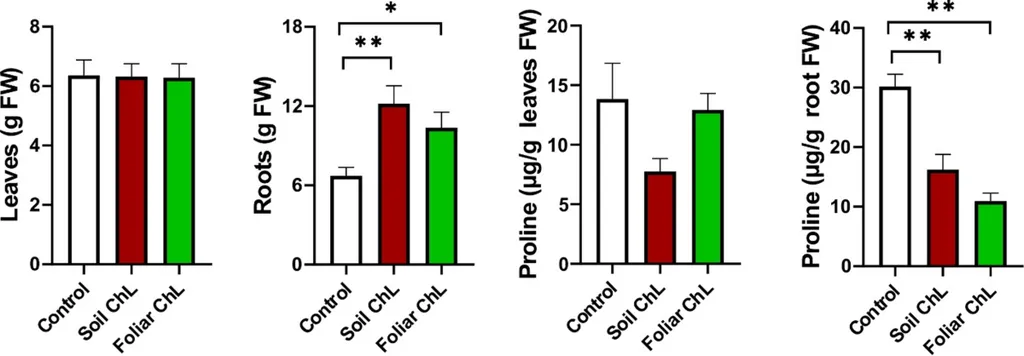In the world of medicinal plants, Carlina acaulis L. has long been a quiet achiever, known for its traditional use as an herbal remedy. But recent interest from agrochemical companies has shone a spotlight on this unassuming plant, particularly due to a valuable biopesticide called carlina oxide (COx) found within its roots. Now, a groundbreaking study led by Maciej Strzemski from the Department of Analytical Chemistry at the Medical University of Lublin has revealed a simple, cost-effective way to boost the production of these valuable compounds, potentially revolutionizing the agrochemical industry.
The study, published in *Scientific Reports* (which translates to “Nature Research Reports” in English), explores the use of chitosan lactate (ChL), a polysaccharide derived from chitin, as an elicitor to stimulate the biosynthesis of specialized metabolites in Carlina acaulis. Elicitors are substances that enhance a plant’s natural defense mechanisms, often leading to an increase in the production of valuable compounds.
Strzemski and his team found that applying ChL to the soil significantly increased the plant’s root biomass and enhanced the levels of specialized metabolites. “We observed a considerable increase in chlorogenic and neochlorogenic acid content in leaves, by approximately 330% and 70%, respectively, compared to controls,” Strzemski explained. These compounds are known for their antioxidant and anti-inflammatory properties, making them highly valuable in the pharmaceutical and cosmetic industries.
But the most promising finding was the increase in carlina oxide levels in the roots. Foliar application of ChL led to a 55% increase in COx levels, compared to a 16% increase with soil treatment. COx is a potent biopesticide, and its enhanced production could lead to more effective and environmentally friendly pest control methods.
The implications of this research are significant for the agrochemical industry. By using ChL as an elicitor, farmers and agrochemical companies can boost the production of valuable compounds in Carlina acaulis without the need for complex and expensive genetic modification techniques. This could lead to more sustainable and cost-effective production of biopesticides and other valuable plant-derived compounds.
Moreover, the use of ChL as an elicitor could have broader applications in the field of plant biotechnology. As Strzemski noted, “Chitosan is a widely available and inexpensive polysaccharide. Its use as an elicitor could be applied to other plant species to enhance the production of valuable compounds.”
The study’s findings open up new avenues for research and development in the field of plant biotechnology. By harnessing the power of elicitors like ChL, we could see a shift towards more sustainable and efficient methods of producing valuable plant-derived compounds. This could not only benefit the agrochemical industry but also contribute to the broader goals of sustainable agriculture and environmental conservation.
In the words of Strzemski, “This study has demonstrated that the application of ChL can be used as an inexpensive and accessible way to boost the production of valuable compounds in Carlina acaulis.” And with further research, this method could be applied to a wide range of plant species, paving the way for a more sustainable and prosperous future for the agrochemical industry.

